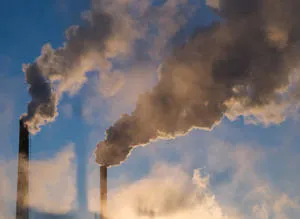
A new study indicates that burning all the Earth’s reserves of fossil fuels could alone cause sea levels to rise by as much as five metres – with levels continuing to rise for typically 500 years after carbon dioxide emissions ceased.
Climate change, including sea level rise, is usually discussed in the context of the next 100 years – the various research assessments of the Intergovernmental Panel on Climate Change (IPCC) are an example. But a paper published this month in the journal Geophysical Research Letters demonstrates how climate change has much longer-term implications for our planet.
The paper, How warming and steric sea level rise relate to cumulative carbon emissions, considers how sea level may change over much longer timescales, due to ocean warming. The authors – Professor Ric Williams of Liverpool University, Dr Phil Goodwin from Cambridge University, Professor Andy Ridgwell of Bristol University and Professor Phil Woodworth of the National Oceanography Centre in Liverpool – found that surface warming, and sea level rise connected to density changes in the ocean (called steric changes), increase nearly linearly with cumulative carbon emissions, when viewed in the future many centuries after emissions cease. Particular issues considered in the analysis were the various feedbacks in the climate system including those from ocean acidity and solubility changes in the ocean.
The implied steric sea level rise ranges from 0.7 metres to 5 metres if all the planet’s conventional fosssil fuel reserves were burned – representing a cumulative emission of about five trillion tonnes (5 × 1012) of carbon – which would be approached perhaps 500 years or more after emissions cease.
It is important to realise that this is a prediction of sea level rise only from the warming of the oceans and does not include the additional contribution from the melting of the great ice sheets.
Reference
Williams, R.G., Goodwin, P., Ridgwell, A. and Woodworth, P.L. (2012) How warming and steric sea level rise relate to cumulative carbon emissions. Geophysical Research Letters, 39. https://doi.org/10.1029/2012GL052771